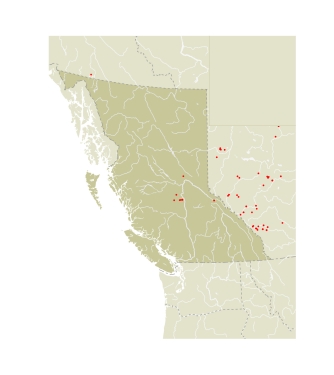AdultThe Brown Elfin and all other elfins lack tails. On the upperside of the wings, BC elfins are very similar. The underside of the wings provides the only good species distinguishing characteristics. The underside of the Brown Elfin is a fairly uniform chocolate brown with typical elfin median and postmedian pattern. Since the publication of The Butterflies of Canada, we have located more populations of this species in central BC, south of Pine Pass to Clinton. There do not seem to be any intermediate specimens between the populations of the Brown Elfin and the Western Elfin. The two are allopatric, with closely adjacent populations, and appear to be another western/boreaI species pair. Thus we re-elevate the Western Elfin, I. iroides, to species status. The Brown Elfin underside ground colour is chocolate brown, while that of the Western Elfin is reddish brown.
Immature StagesCook (1906) described the immature stages from New York. The egg is laid at the base of or in the flower buds. It is green when first laid but quickly changes colour as the larva develops. The egg hatches within five days. The larva feeds on the flower and developing fruit. The entire development from egg to pupa takes one month, from mid-May to mid-June. Pupation occurs on the ground among dead plant material. The pupa remains dormant until the following spring.
SubspeciesBC populations are the nominate subspecies (TL: 54° lat. [near Cumberland House, MB]).
